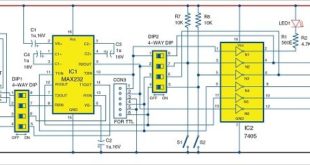Today, it is not just about interesting technologies, the world has come to a place where the utility of these technologies is impacting the human lives to a huge extent. So, with this amount of impact, how secure are we with these Internet of Things (IoT) and smart networks around us? To get a glimpse of this, Ankita KS from EFY had an interaction with Mr. Rahul Patel, the senior vice president and general manager – connectivity of Qualcomm.
Q. How is voice being integrated with analytics in any IoT product?
A. Integrating the voice technology is very delicate and highly sensory because it must be able to differentiate and identify everyone precisely, based on their tones, the way they speak and multiple other parameters. This is done by elevated level of machine learning, artificial intelligence (AI) and the right analytics integrated into a product. Also, here analytics is not only the recognition of the voice but also being able to pivot to the right action based on the past preferences. This makes it easier for the service provider too. Instead of bombarding you with many channels and not knowing which channel you might choose to watch, now they can provide you with channels of your interest.
Q. From the technology point of view, what are the essentials needed to integrate voice?
A. The IoT device must have the ability to recognise speech, biometrics and understand where the sound is coming from. The microphone technology should be far-field and precise. Also, each device must be multifunctional. An electronic speaker must not just play music, but it should create a node for better networking experience as well.
Q. What were the challenges faced while building the Qualcomm mesh networking system?
A. The main challenge was to make the network understand multiple parameters such as difference among accents, languages and make sure the user experience is not compromised. Also, voice integration needs a certain bandwidth allocation, which Wi-Fi must be able to provide. If not, the quality of voice reduces thus decision making and integration with the consumer get compromised.
Q. Could you shed more light on how Qualcomm’s 802.11ax can increase the efficiency of the network?
A. For dense wires, 802.11ax is a high-efficiency Wi-Fi for because it increases the capacity of the network with the existing nodes and frequency medium itself. This efficiency (802.11ax) increases the speed of the devices by four times and as a result we get better coverage and performance. We are going to bring a chip called WCM3998, which is going to make 802.11ax a ready solution for mobile phones. This will expand the capacity of the same phone by two times with efficient audio features and advanced Bluetooth features. With advanced Bluetooth 501, power consumption is going to be lowered for almost 60 per cent and it’s going to be highly secure.
Q. How is the Wi-Fi market in India?
A. One important thing we see in the Indian market today is the tremendous amount of data being consumed over Wi-Fi. Statistics says that majority of Samsung and iPhones today have almost 90 per cent of its data traffic consumed over Wi-Fi. With this amount of data consumption, quality of the Wi-Fi and content too, should not be compromised. We also see a huge change in the consumer requirements in India, so the phone companies are adapting 2×2 11ac in the phones. The 2×2 11ac takes half the time to download files, improves the capacity and reduces the battery consumption thus increasing the life of a phone.
Q. What is the main problem when it comes to these Wi-Fi networks in India?
A. The main problem is that there is only limited bandwidth available and thus the devices tend to get congested. We are getting to a future where there is Wi-Fi all around us – be in shopping malls, stadiums or airports among more and yet we find shortage of connectivity. This problem can be best compared with the roads in Bangalore, Mumbai or Delhi, where adding more cars will only cause congestion. So, with more devices, come the need for more bandwidth and that is one of the challenges that we are trying to solve.
Q. How is Qualcomm trying to bring IoT capabilities using cellular connectivity?
A. If you look at the world, there are multiple bands, networks, protocols like Wi-Fi, Zigbee, Bluetooth, etc. Now, even the pole to pole wire connections are getting replaced with wireless technology. We have a technology called 11ad that uses 60 GHz millimetre wave.
The intent of this technology is to replace wires. With 60 GHz, the performance will be better than the standard High Definition Multimedia Interface (HDMI) thus giving better performance than wired connections.
This content was originally published here.








